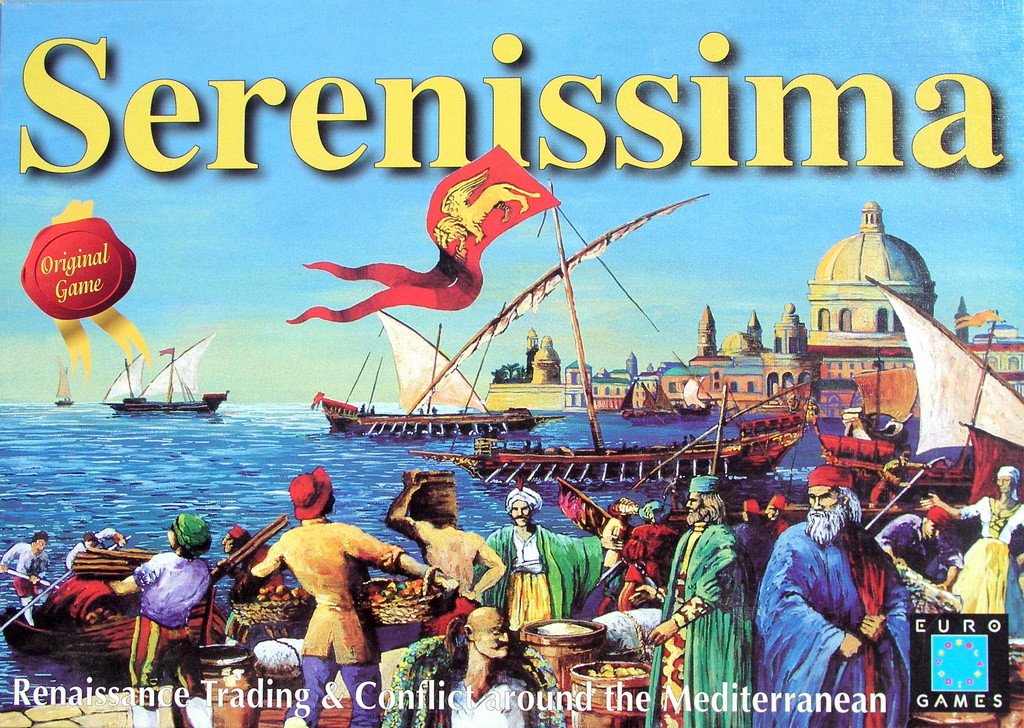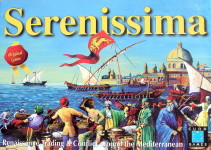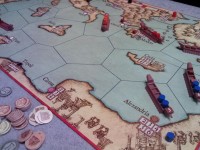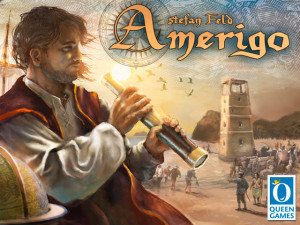- Learning time
- 40 minutes
- First play time
- 150 minutes
Serenissima
Designed by: Dominic Ehrhard,Duccio Vitale
In Serenissima players take on the role of peoples trading (and fighting) across the Mediterranean Sea in the 14th century.
There are four starting positions on the board, which shows the Mediterranean and surrounds. Players can be Spanish, Turkish, or one of two Italian peoples, as they begin the game with an empty boat and some money to buy goods and hire sailors.
At its heart Serenissima has a simple set of purchasing and movement rules. Goods can be bought from any port where they either show on the board itself, or have been added to the ports “warehouse” during the game. Buying goods from other players ports is a process of negotiation: they can force the price up, but they can’t refuse to sell.
Selling into ports is simple too – as long as the good in question isn’t already there, you can not only sell a good to that port, but potentially get large bonuses if the player you are selling to doesn’t own the good in question at any of their ports.
Movement is even simpler – your ship can move as many spaces as you have sailors in it. So the game is forever a balance between loading up your boats with precious goods, and making sure they are capable of moving quickly enough to get somewhere worthwhile!
As intimated above, the game also contains combat. Early in the game players can spread their empires by planting their flag in unclaimed ports. But as the game progresses, these ports have all been claimed and players are more than likely trying to take ports from each other. Dice rolls form a part of combat, but as with a war game like Risk, outnumbering your opponents sailors with sailors of your own is key. Sailors can also attack other ships and, if successful, board them and take the ship (and any goods onboard) as their own.
At the end of the game players score points for their ownership of ports, warehouses in the ports, and money.
Serenissima combines old-fashioned game values of dice-rolling and combat with a bit of trading and economics. Like the time it seeks to emulate, it starts a story at peace before inevitably drifting into war!
Note: we have reviewed the first edition here. Serenissima has since been redesigned for its rerelease.
The guru's verdict
-
Take That!
Take That!
It's possible to play - and perhaps even win - Serenissima without ever starting a fight yourself. But it's very unlikely you won't be embroiled in one!
-
Fidget Factor!
Fidget Factor!
There can be down-time between turns as players ruminate on their next move, but as a fairly aggressive game Serenissima is probably not for younger children anyway.
-
Brain Burn!
Brain Burn!
Often things move quickly as players put their plans into action. But plans can go awry and then you may take a few minutes to come up with an alternative option.
-
Again Again!
Again Again!
Dice rolls decide combat and these are always random, but Serenissima also invites different strategies - very aggressive, very focused on trading, or somewhere between the two.










Sam says
What I like about Serenissima is the narrative. Everybody starts out - usually, at least - busy with their own trade routes, and the rules mean trade is always an option; assuming the buyer doesn't already have what you're selling. But as each civilization becomes more powerful, peace inevitably degenerates into war. It's almost the human race in tragic microcosm... however, you can negate this existential dread with tabletop chatter and post-game forgiveness.